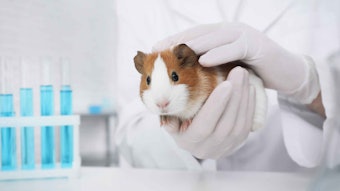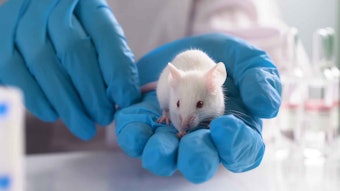What is reality in this day and age? I’ve wondered this since my husband acquired his Sony Playstation game system and began spending Wednesday nights online with other gamers, mostly shooting zombies. With today’s electronic lifestyle of texting, skyping, e-mailing and more, I might conclude that today’s reality is digital. Of course, one of the great benefits of a digital reality is the fact that it is limited only by the programmer’s imagination. How has this reality shaped the cosmetics industry?
One area that comes to mind is advancements in instrumentation to test and measure things-from informatics software and molecular modeling, to biochips, genomics and more. Yet, while these tools provide excellent predictive capabilities, most would agree on the importance of measuring results against the real deal: enter in vivo testing.
Another benefit of this reality is that it has allowed for the development of some alternatives to animal testing. Even before the ban on animal testing went into force in March, major efforts were under way to find alternatives. In fact this month, from Aug. 30–Sept. 3, 2009, Rome welcomes the VII World Congress on Alternatives and Animal Use in the Life Sciences, with topics ranging from tissue engineering to toxicity testing. In some cases, alternatives have been validated; however, the industry is left asking: Are the alternatives as good (or as safe) as the real deal?
This edition of C&T magazine takes a closer look at alternatives to animal testing with Oborska’s review of existing and pending methods. In addition, the author discusses the complexity of the process to validate alternative test methods.
What other effects has a digital reality had on the industry? It certainly has allowed for the development of highly advanced materials and the measurement of their efficacy. For instance, Imbert et al. describe a pea-derived extract that assists skin in “switching on” its own melanin content for self-tanning and skin protection. Other such examples are showcased in this month’s Actives Encylopedia. Society in general seems to have embraced a digital reality, yet scientists understand the need to back predictive results with physical, in vivo proof; in the case of the zombies, however, their demise can remain entirely in silico.









![A 2019 petition to the House of Commons stated, 'We, the undersigned residents of Canada, draw the attention of the House of Commons ... [that] animal testing is unnecessary to prove the safety of cosmetic products.'](https://img.cosmeticsandtoiletries.com/files/base/allured/all/image/2023/01/animal_testing_ban_canada_dreamstime_m_215632720.63d313232306d.png?auto=format%2Ccompress&fit=crop&h=191&q=70&rect=0%2C73%2C1800%2C1013&w=340)
